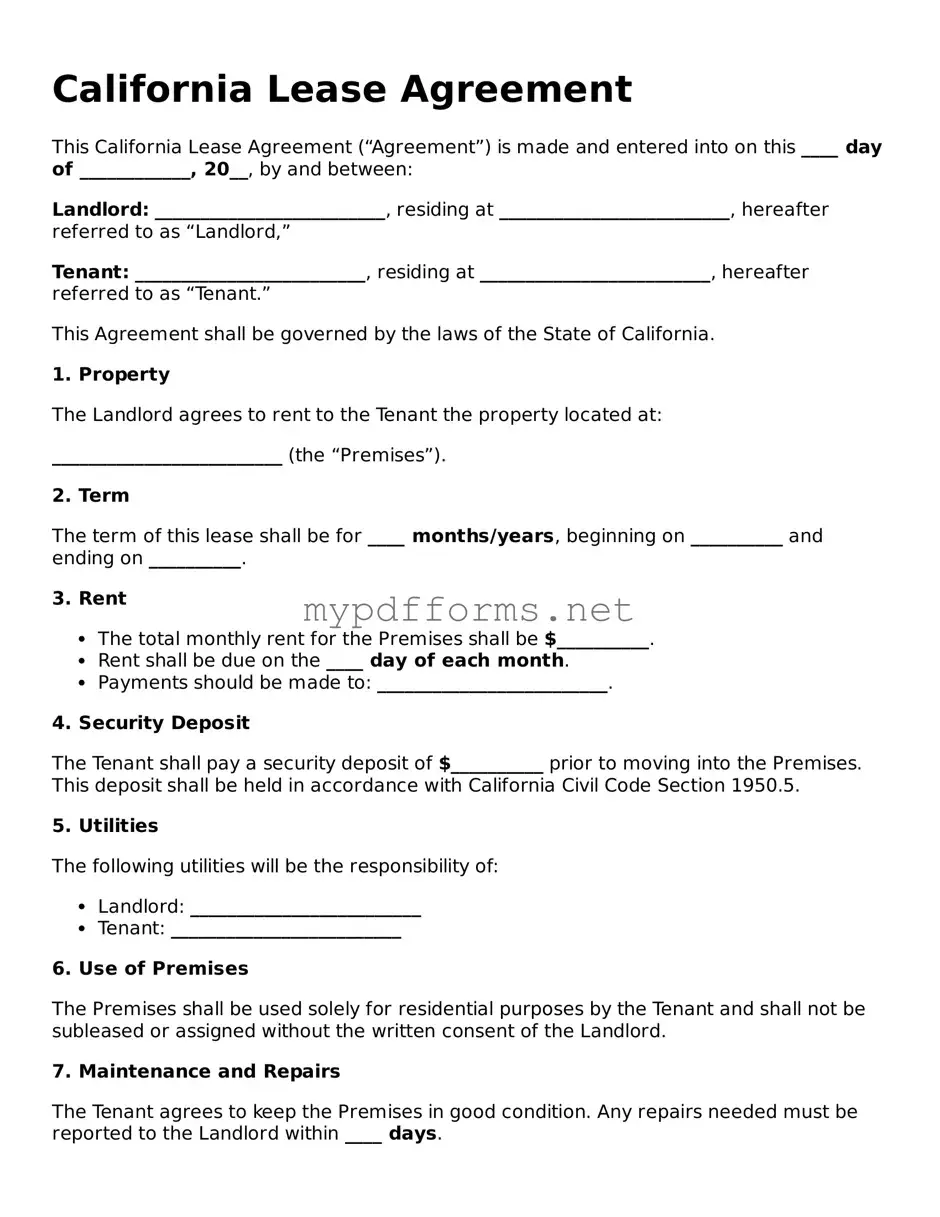The California Rental Agreement is quite similar to the Lease Agreement. Both documents outline the terms and conditions under which a tenant can occupy a property. Typically, they specify the rental amount, duration of the lease, and responsibilities of both the landlord and tenant. While a lease often covers a longer term, such as a year, a rental agreement may be more flexible, allowing for month-to-month arrangements. Both documents serve to protect the rights of both parties and provide clarity on expectations.
The Sublease Agreement is another document that shares similarities with the California Lease Agreement. This form allows a tenant to rent out their leased space to another individual, known as the subtenant. It must align with the original lease terms and often requires the landlord’s approval. Like the lease agreement, it outlines the responsibilities of the subtenant and the original tenant, ensuring that both parties understand their obligations. This can be particularly useful when a tenant needs to temporarily relocate but wants to maintain their rental arrangement.
A Roommate Agreement is also comparable to a Lease Agreement, particularly when multiple tenants share a rental property. This document specifies the rights and responsibilities of each roommate, including how rent and utilities will be divided. While a lease agreement is typically between the landlord and one tenant, a roommate agreement focuses on the internal dynamics among tenants. It can help prevent misunderstandings and conflicts by clearly defining each person's role within the shared living space.
To smoothly navigate the complexities of forming an LLC, consider utilizing a resource for your company's management structure through an comprehensive Operating Agreement template. This document is vital in outlining operational procedures and member responsibilities.
The Commercial Lease Agreement is similar in structure to the California Lease Agreement but is specifically designed for business properties. This document outlines the terms of renting commercial space, such as retail or office buildings. Like residential leases, it includes details on rent, duration, and responsibilities. However, it often addresses additional factors relevant to businesses, such as zoning laws and permitted uses of the space. Both agreements aim to protect the interests of the landlord and the tenant while ensuring compliance with relevant laws.
The Rental Application form is another document that connects closely with the California Lease Agreement. Before entering into a lease, landlords often require prospective tenants to complete a rental application. This form collects essential information, such as employment history and references, to help landlords assess the suitability of applicants. While the lease agreement formalizes the rental arrangement, the application serves as the initial step in the tenant selection process, ensuring that landlords can make informed decisions.
Finally, the Eviction Notice shares some similarities with the California Lease Agreement, though it serves a different purpose. This document is issued by the landlord when a tenant violates the terms of the lease. It outlines the reasons for the eviction and provides a timeframe for the tenant to remedy the situation or vacate the property. While the lease agreement establishes the rules and expectations for tenancy, the eviction notice is a legal means of enforcing those rules when necessary, ensuring that landlords can protect their property and rights.
